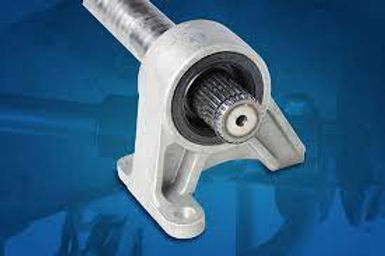
What is an Intermediate Shaft
An intermediate shaft is a solid or hollow metal rod placed between two main parts of a system. It works as a bridge to carry power or motion from the first shaft to the final part that needs to move. It does not create power on its own. Instead, it passes along the power or rotation that comes from the engine, motor, or gearbox.
This type of shaft is used when the distance between two main shafts is too long or when they are not in a straight line. In such cases, the intermediate shaft helps maintain balance, alignment, and smooth operation of the system. It also helps reduce vibration and wear on the other parts.
Use of Intermediate Shaft in Vehicles
In vehicles, an intermediate shaft is often found in the steering system and the drivetrain. In the steering system, it connects the steering wheel to the steering gearbox or rack. This allows the driver to turn the wheels easily and smoothly, even if the parts are not in a straight line.
In the drivetrain, the intermediate shaft helps transfer power from the engine or transmission to the wheels. In front-wheel drive vehicles, for example, the intermediate shaft connects the transmission to the drive axle on one side of the car. This helps balance the power between the left and right wheels, especially when the engine is not in the center.
Why Intermediate Shafts Are Important
Intermediate shafts are very important because they help solve design and space problems in machines and vehicles. Without them, it would be hard to connect different parts that are not lined up or are too far apart. They also help improve performance by reducing strain on other parts, preventing shaking, and making movement smoother.
In vehicles, the use of an intermediate shaft improves control and handling. In machines, it helps make the system more flexible and easier to design. These shafts can also make maintenance easier because they break up long connections into smaller, easier-to-reach parts.
Materials and Design
Intermediate shafts are usually made from strong metals like steel or aluminum. They need to handle pressure, rotation, and sometimes vibration. Some shafts are straight, while others may be shaped or angled to fit the space inside the machine or vehicle. They may also include joints or bearings to allow movement and reduce friction.
Conclusion
An intermediate shaft is a simple but important part in many systems. It acts as a connector, helping transfer power or motion between parts that are not directly aligned. Whether in a car's steering system or in a machine’s drivetrain, the intermediate shaft helps keep everything working smoothly. By understanding how it works and where it is used, we can better appreciate how machines and vehicles are built to run efficiently and safely.